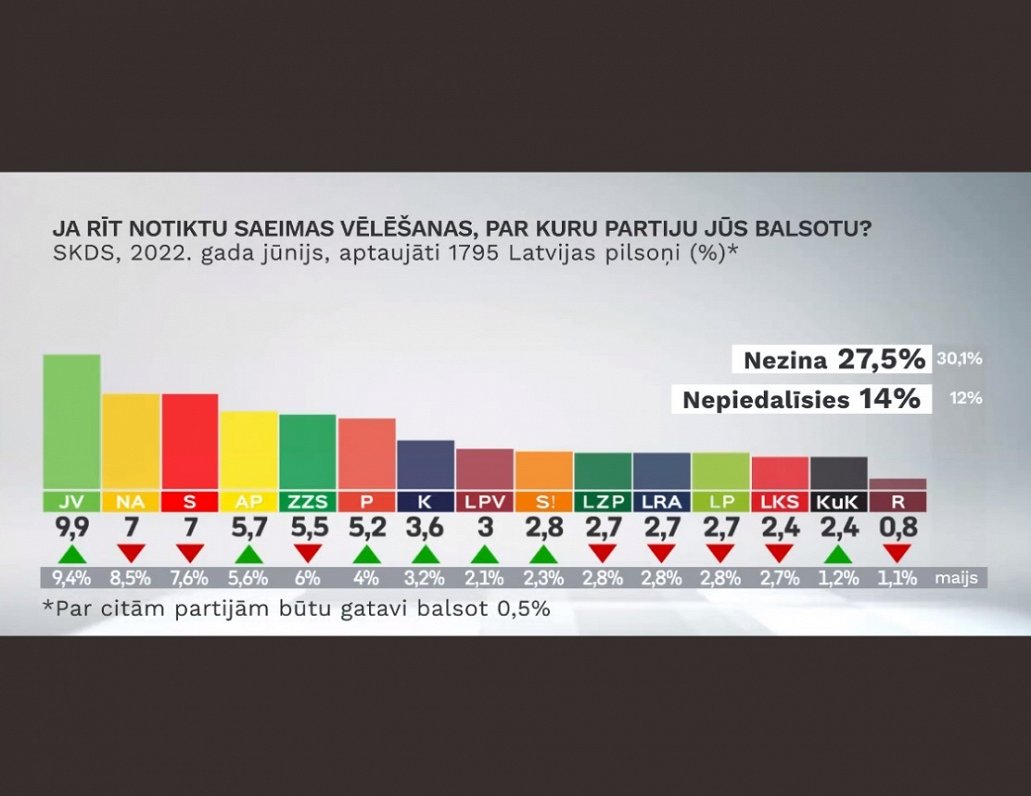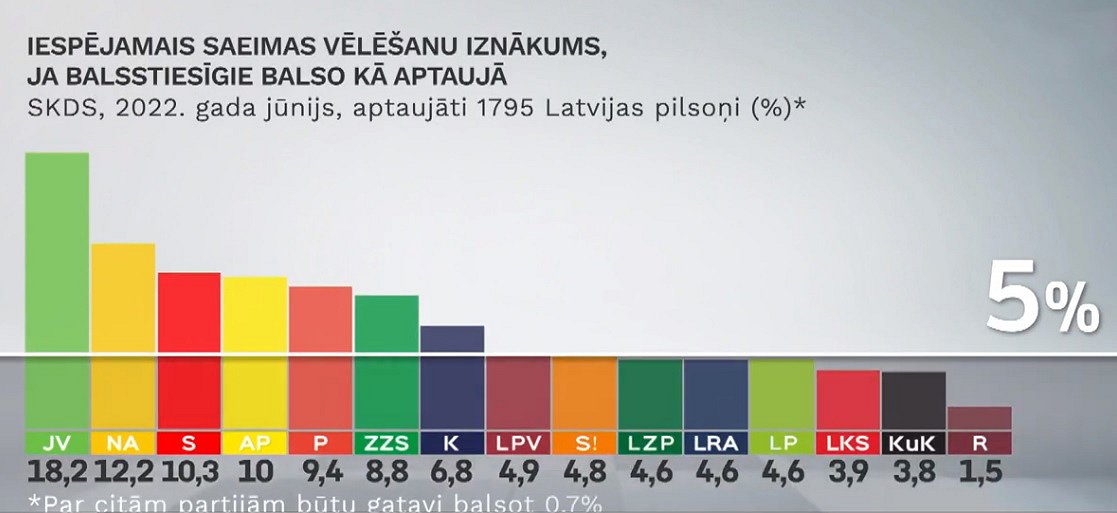The New Unity (JV) party of Prime Minister Krišjānis Kariņš remains in the lead, albeit with less than a 10% share of the potential vote.

Second place is held by another coalition party, the National Alliance (NA, 7%), neck and neck with the opposition Harmony party (S, 7%) with the same level of support. Among the top three, New Unity is the only one to have increased its share from May to June.
Another coalition party, For Development/For! (A/P 5.7%) is in fourth spot, while the opposition Greens and Farmers Union (ZZS, 5.5%) slips to fifth.
The Progressives (P, 5.2%) are likely to be among the happiest of the bunch, having seen their support grow by 1.2% during the last month. They are not currently represented in Saeima but now seem to have a golden opportunity to pick up seats if they can maintain such a level of support.
The Conservatives (K, 3.2%), continue to trail their coalition partners but have managed to increase their share slightly, while the relatively new Latvia In First Place (LPV, 3%) party is the only other party mustering 3% support.
In order to win seats in partliament, a party needs to attract at least 5% of ballots cast (not 5% of eligible votes!). According to SKDS/LTV's projections, if elections were held tomorrow, we could expect to see seven parties represented, with a few others close to the 5% threshold.

However, all such predicitions are made in the shadow of one other important fact: the very high levels of voters who say they are yet to decide who to vote for (27.5%) and those who say they do not intend to vote at all (14%). Combined, that means more than 40% of the electorate can be considered "floating" and therefore likely to be the targets of politicians' powers of persuasion as election day looms.



























